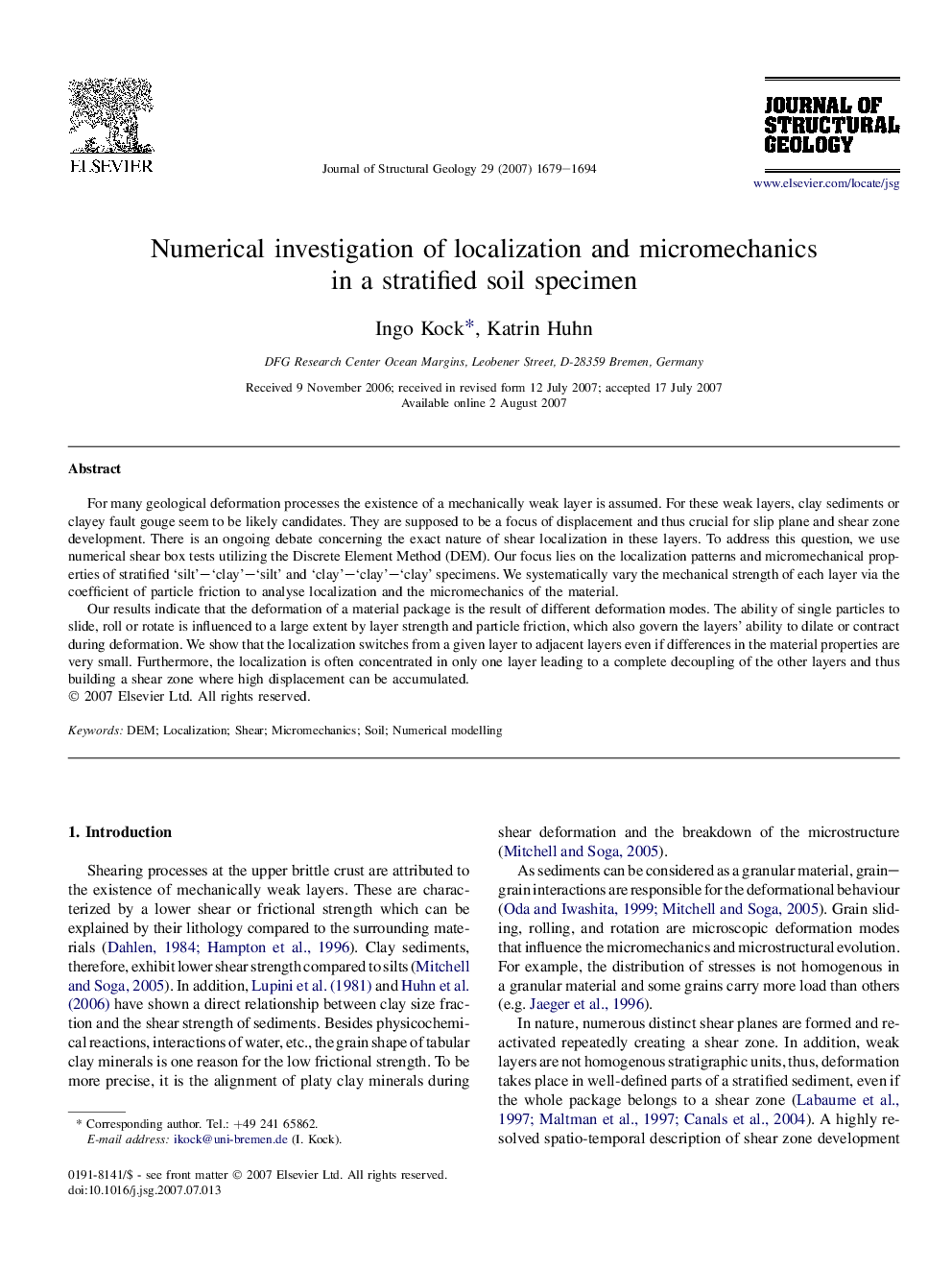| کد مقاله | کد نشریه | سال انتشار | مقاله انگلیسی | نسخه تمام متن |
|---|---|---|---|---|
| 4733992 | 1357064 | 2007 | 16 صفحه PDF | دانلود رایگان |

For many geological deformation processes the existence of a mechanically weak layer is assumed. For these weak layers, clay sediments or clayey fault gouge seem to be likely candidates. They are supposed to be a focus of displacement and thus crucial for slip plane and shear zone development. There is an ongoing debate concerning the exact nature of shear localization in these layers. To address this question, we use numerical shear box tests utilizing the Discrete Element Method (DEM). Our focus lies on the localization patterns and micromechanical properties of stratified ‘silt’–‘clay’–‘silt’ and ‘clay’–‘clay’–‘clay’ specimens. We systematically vary the mechanical strength of each layer via the coefficient of particle friction to analyse localization and the micromechanics of the material.Our results indicate that the deformation of a material package is the result of different deformation modes. The ability of single particles to slide, roll or rotate is influenced to a large extent by layer strength and particle friction, which also govern the layers' ability to dilate or contract during deformation. We show that the localization switches from a given layer to adjacent layers even if differences in the material properties are very small. Furthermore, the localization is often concentrated in only one layer leading to a complete decoupling of the other layers and thus building a shear zone where high displacement can be accumulated.
Journal: Journal of Structural Geology - Volume 29, Issue 10, October 2007, Pages 1679–1694